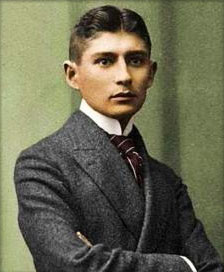The 1992 edition of the Muirs’ translation, in Alfred A. Knopf’s Everyman’s Library, contains a preface by Irving Howe.
The Muirs’ translations use words that some consider “spiritual” in nature. For example, the Muirs translate the description of a church tower in K.’s homeland, which K. compares with the castle, as “soaring unfalteringly”, where Harman, p. 8, uses “tapering decisively”, Underwood, p. 9, writes, “tapering straight upward”, and Bell, p. 11, writes “tapering into a spire”. Furthermore, the Muirs use “illusory” from the opening paragraph forward. Some critics note this as further evidence of their bias toward a mystical interpretation.
Harman translation
In 1961 Malcolm Pasley was able to gain control of the manuscript, along with most of the other Kafka writings (save The Trial) and had it placed in the Oxford’s Bodleian library.
There, Pasley headed a team of scholars and recompiled Kafka’s works into the Critical Edition. The Castle Critical Edition, in German, consists of two volumes—the novel in one volume and the fragments, deletions and editor’s notes in a second volume. They were published by S. Fischer Verlag in 1982, hence occasionally referred to as the “Fischer Editions”.
Mark Harman used the first volume of this set to create the 1998 edition of The Castle, often referred to as based on the “Restored Text” or the “English Critical Edition”. Unlike the Muir translation, the fragments, deletions, and editor’s notes are not included. According to the publisher’s note:
We decided to omit the variants and passages deleted by Kafka that are included in Pasley’s second volume, even though variants can indeed shed light on the genesis of literary texts. The chief objective of this new edition, which is intended for the general public, is to present the text in a form that is as close as possible to the state in which the author left the manuscript.
Harman’s translation has been generally accepted as being technically accurate and true to the original German. He has, however, received criticism for at times not creating the prosaic form of Kafka.
Harman includes an eleven-page discussion on his philosophy behind the translation. This section provides significant information about the method he used and his thought process. There are numerous examples of passages from Pasley’s, Muir’s, and his translation to provide the reader with a better feel for the work. Some feel that his (and the publisher’s) praise for his work and his “patronizing” of the Muirs goes a little too far. J. M. Coetzee writes that Harman says that his translation is “stranger and denser” than the Muirs’. But, Coetzee adds, “in its very striving toward strangeness and denseness [Harman’s] own work—welcome though it is today—may, as history moves on and tastes change, be pointing toward obsolescence too”.
Adaptations
Film
The Castle (Das Schloß), a 1968 German film directed by Rudolf Noelte, starring Maximilian Schell as K.
Linna, a 1986 Finnish adaptation directed by Jaakko Pakkasvirta. In this film, the main character’s name was Josef K., who is the protagonist of Kafka’s novel The Trial.
The Castle (Замок), a 1994 Russian film directed by Aleksei Balabanov, starring Nikolay Stotsky as K.
The Castle (Das Schloß), a 1997 Austrian film directed by Michael Haneke, starring Ulrich Mühe as K.
